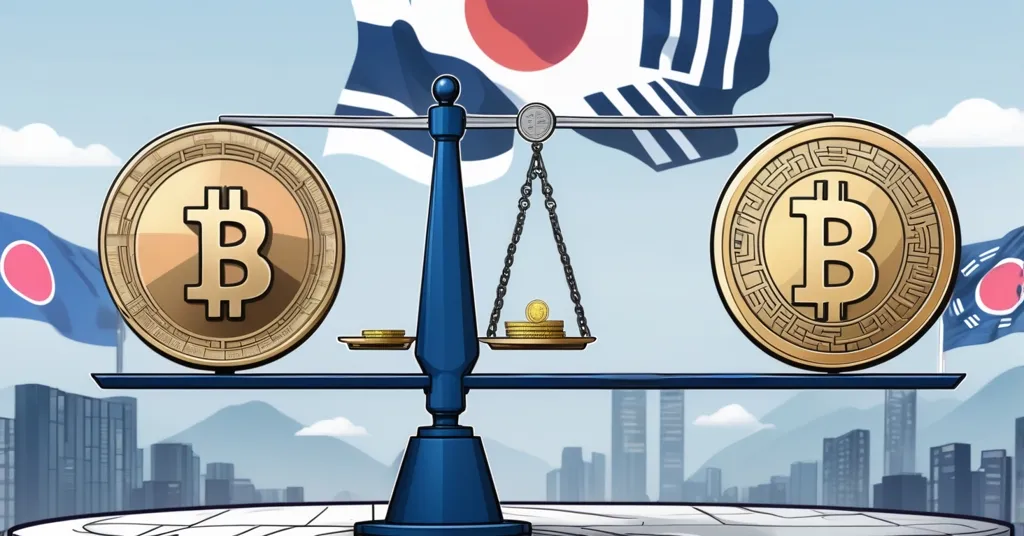South Korean Experts Warn of Stablecoin Risks as Election Looms

South Korean Experts Warn Seoul of Mounting Stablecoin Danger
South Korean financial and legal experts are raising alarms about the risks of adopting stablecoins, particularly those pegged to the U.S. dollar, as the country grapples with potential economic and political implications.
- Experts warn of stablecoin impact on Korean won and exchange rates
- Leading presidential candidate proposes KRW-pegged stablecoin
- Debate over regulation and global trends sparks
On May 19, 2025, at the FKI Tower Conference Center in Seoul, the Korea Economic Association convened to discuss the growing influence of stablecoins. These cryptocurrencies, designed to minimize price volatility by pegging their value to a stable asset like the U.S. dollar, are now seen as a potential threat to the Korean economy. Experts at the meeting warned that widespread use of dollar-based stablecoins could lead to a decrease in the use of the Korean won, affecting exchange rates and the central bank’s ability to control monetary policy.
Lee Seung-seok, a senior researcher at the Korea Economic Research Institute, highlighted the severity of the issue, stating,
“If dollar-based stablecoins become established as a means of payment in South Korea, this could bring about changes in how the value of the Korean won is set compared to the U.S. dollar. Exchange rates could soar due to a drop in KRW demand and an increase in demand for foreign currency.”
This shift could lead to significant economic repercussions, including the potential for large-scale capital outflows during crises.
As the country approaches its presidential election on June 3, 2025, the political landscape is also heating up. Leading presidential candidate Lee Jae-myung from the Democratic Party has proposed launching a KRW-pegged stablecoin if elected. This move aims to counter the risks posed by foreign stablecoins and maintain control over the national economy. Lee’s proposal includes an integrated monitoring system and lower transaction fees to make cryptocurrencies more accessible under government oversight.
The political debate on stablecoins is intensifying. Lee Jun-seok from the Reform Party challenges Lee Jae-myung’s plan, arguing,
“There are no use cases for any sort of stablecoins that use a peg other than the USD… USDC and USDT, combined, account for 90% of the stablecoin market.”
This opposition underscores the tension between embracing innovative financial technologies and maintaining economic stability.
The regulatory debate in South Korea is far from settled. While some advocate for stringent oversight by financial regulators, others argue for adopting existing high-cap stablecoins like USDT and USDC. Kim Hyo-bong, a former Financial Supervisory Service official, emphasized the need to align with global trends, saying,
“South Korea should also make sure it acts in line with global trends.”
With the U.S. and EU expected to introduce stablecoin legislation in 2025, South Korea faces pressure to remain competitive and avoid isolation due to excessive regulations.
Kang Tae-soo, a visiting professor at KAIST Graduate School of Finance and a member of the Bank of Korea Monetary Policy Committee, acknowledged the dual nature of stablecoins. He noted,
“Stablecoins offer firms advantages in the payment and settlement spaces… [but] they could sow uncertainty in the monetary and foreign exchange policy sectors.”
This highlights the challenge of balancing the advantages and challenges of stablecoins with the risks they pose to traditional monetary systems.
Namgung Joo-hyun, an Associate Professor of Commercial Law at Sungkyunkwan University, warned against over-regulation, stating,
“We must take steps to ensure South Korea does not end up isolated due to excessive regulations. We need to establish a financial framework that provides both international consistency and industrial competitiveness.”
The balance between embracing technological advancements and maintaining economic stability is crucial for South Korea’s future in the global digital asset landscape.
Amidst this debate, it’s worth noting that Bitcoin, the pioneer of cryptocurrencies, operates differently from stablecoins. While stablecoins are designed for stability, Bitcoin’s decentralized nature and capped supply offer a different value proposition, often seen as a hedge against inflation and a tool for financial freedom. As South Korea navigates the complexities of stablecoin adoption, the broader role of cryptocurrencies like Bitcoin in the financial revolution remains a topic of interest and debate.
Key Takeaways and Questions
- What are the potential risks of adopting dollar-based stablecoins in South Korea?
The risks include a decrease in the use of the Korean won, potentially causing exchange rates to soar. The Bank of Korea might lose control over monetary policy and foreign exchange interventions, with the added risk of large-scale capital outflows during crises.
- What is the political stance on stablecoins in South Korea?
Leading presidential candidate Lee Jae-myung supports a KRW-pegged stablecoin, with his party advocating for regulatory oversight. In contrast, Lee Jun-seok challenges this, questioning the stability and use cases of non-USD pegged stablecoins.
- How might global trends influence South Korea’s stablecoin policies?
Global trends, including upcoming stablecoin legislation in the U.S. and EU, could push South Korea to align its policies to remain competitive and avoid isolation due to excessive regulations.
- What advantages do stablecoins offer, and what challenges do they pose?
Stablecoins offer advantages in payment and settlement for firms but pose challenges due to their decentralized nature, potentially causing uncertainty in monetary and foreign exchange policies.
- How should South Korea balance the adoption of stablecoins with regulatory control?
South Korea should establish a financial framework balancing international consistency with industrial competitiveness, minimizing the side effects of stablecoin adoption while maximizing its advantages, and avoiding over-regulation that could isolate the country from global digital asset trends.
- What role does Bitcoin play in the broader cryptocurrency ecosystem?
Bitcoin offers a different value proposition from stablecoins, serving as a decentralized, capped supply currency often seen as a hedge against inflation and a tool for financial freedom.



